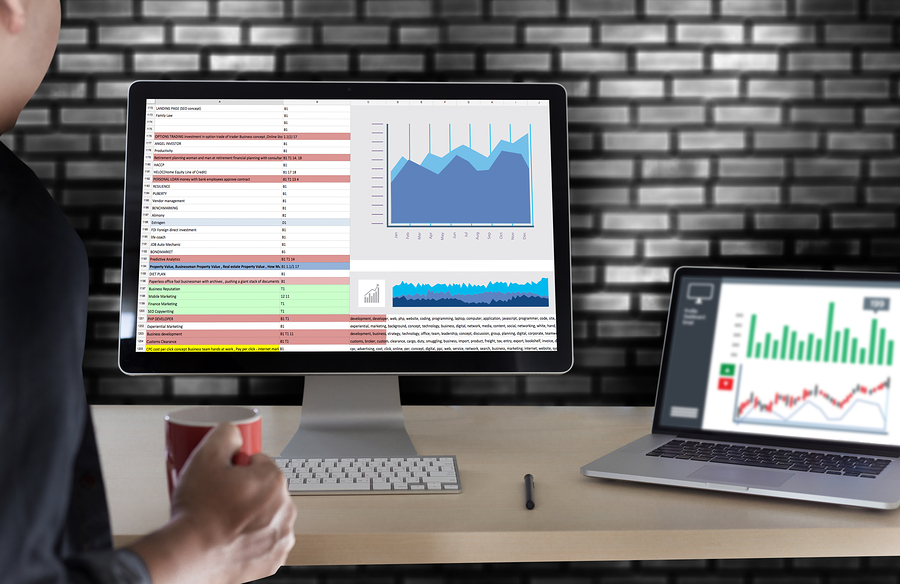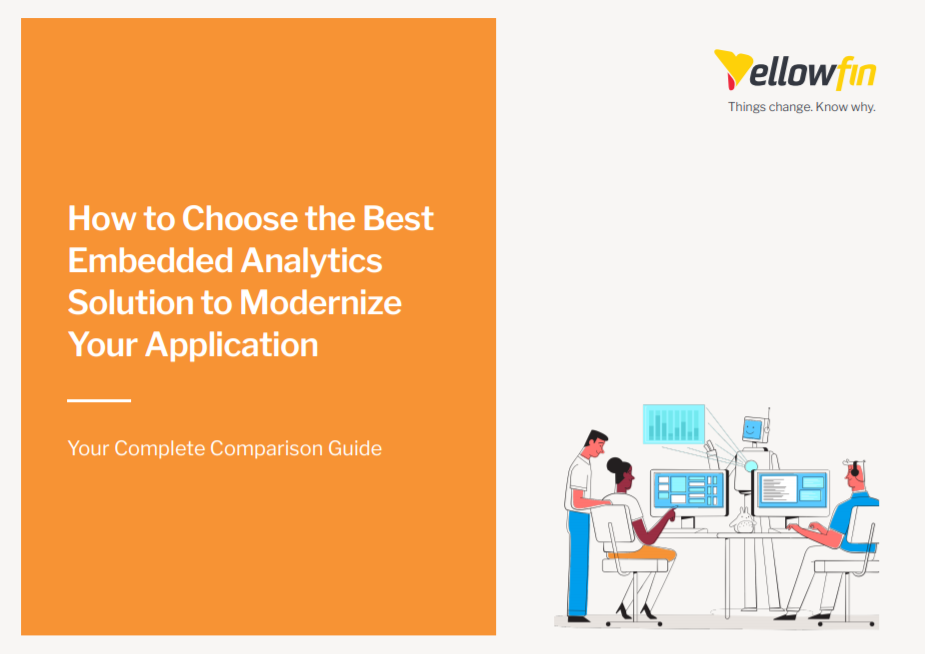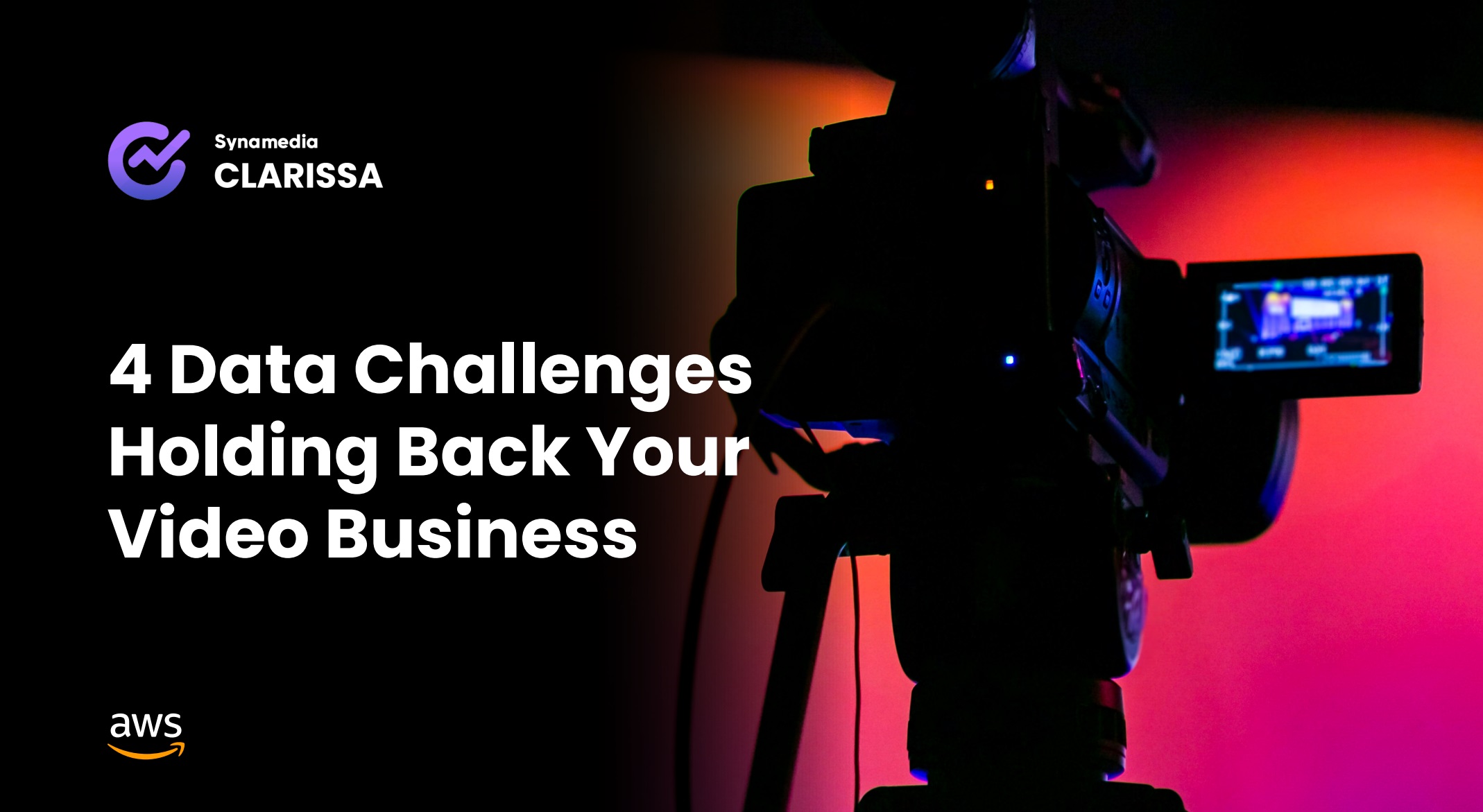How to choose an embedded analytics vendor
The advantages of embedded analytics can only be achieved in partnership with the right vendor


Modernising applications with rich analytics functionality is a quick way of boosting competitiveness. Analytics forges paths into new markets, expanding a business’ reach while better serving existing and prospective customers.
When it comes to how businesses go about integrating analytics, however, they are met with a choice. The ‘build-in-house’ approach typically requires greater investment of resources, particularly IT personnel and time, while the ‘embedding analytics’ approach often requires a much lower resource commitment. Each business and application has its differences, but generally, out of the two approaches the embedding route is seen as the better value of investment.
RELATED RESOURCE

But the decisions don’t stop there. When a business chooses to go with an embedded analytics offering they then have to pick a vendor. Too often within IT, vendors are viewed as one-size-fits-all, when in reality different vendors exist because they have unique selling points.
Selecting the right vendor is crucial to reducing risk and quickening go-to-market. With an unsuitable partner by your side, the advantages of analytics may become unattainable. Key qualities to consider are the analytics feature sets, compatibility with the business environment, and strength of success offerings.
Here, we’ve created a roadmap to your ideal embedded analytics vendor. Below are seven questions that must be run through during any embedded analytics evaluation to ensure that the key buying criteria are addressed.
1: Is the data properly prepared?
The major challenge in business intelligence is making sure that the data is properly consolidated and prepared before analysis. Choosing a vendor who provides a fully-fledged solution for data integration, including options for data blending, migration, enrichment and cleansing will save a great deal of time and expense with trying to get data ready to be effectively analysed. Some vendors may only provide data 'connectors', so this is worth keeping an eye out for.
2: Is reporting flexible?
Although self-service data visualisation has become a core requirement for business users, other elements are just as important such as production quality reporting, user-driven dashboards and custom slice and dice' pivot-style analysis. Selecting a flexible toolset that provides all of these different capabilities will prevent having to buy or build other analytics features in the future as business needs evolve.
Get the ITPro daily newsletter
Sign up today and you will receive a free copy of our Future Focus 2025 report - the leading guidance on AI, cybersecurity and other IT challenges as per 700+ senior executives
Making the reporting accessible to business users, not just IT staff, is also important to remove barriers to adoption, rather than having staff reliant on specialists to create and edit reports.
3: How well do the analytics integrate?
It's essential that the chosen analytics solution can integrate seamlessly with the businesses front-end products, so that not only the look and feel is right, but also the types of analytics content and functionality blend in. It is also important to minimise barriers to analytics adoption, such as additional prompts for user credentials.
Some vendors provide flexible embedding options to embed only specific reports, which can be useful if user needs change within the business.
4: Is it straightforward to deploy?
Software products have their own unique data environments and architectures, so it isn't at all surprising that a successful embedded analytics solution will have to work well with these existing systems. Any potential vendor should be scrutinised to assess their compatibility with the businesses deployment types, configuration as well as security and access frameworks. Finding a vendor that properly aligns with the architecture will reduce risks and costs during implementation and beyond.
5: Can it evolve with your business?
Software requirements and roadmaps change over time in any business, so in order to meet evolving requirements and reduce risk, it helps to have an understanding of how the software works, both in terms of technology standards as well as the vendor's future plans for their platform. Good, long-lasting technology partnerships are based first and foremost on transparency.
6: What type of vendor best fits?
There are several different types of analytics vendor present in today's market, each with their own product offerings which lend themselves to different uses. Developer vendors are selected as they are highly customisable, noted for their complex functionality in building reports and dashboards that require coding expertise. Data discovery vendors focus more on visual exploration and traditional dashboarding; easy to use, but not as customisable. Specialist vendors offer reports and dashboards that can be coded with an easy to use interface.
Typically, more complex tools require greater resources, and so it's important to first identify what level of analytics your organisation really needs, before taking the investment leap.
7: How does it look?
Interface design may sound rudimentary compared to the requirements set above, but being able to understand the presented data is the entire point of integrating embedded analytics in the first place. Analytics is about visualising data so it can be relayed at a glance. A sufficient toolkit of graphs and charts will aid users in their interpreting.
Some embedded analytics tools also allow users to rebrand (white-label) the interface to make it appear like the broader applications in use, casting an illusion that means users don't know they're traversing multiple applications.
Esther is a freelance media analyst, podcaster, and one-third of Media Voices. She has previously worked as a content marketing lead for Dennis Publishing and the Media Briefing. She writes frequently on topics such as subscriptions and tech developments for industry sites such as Digital Content Next and What’s New in Publishing. She is co-founder of the Publisher Podcast Awards and Publisher Podcast Summit; the first conference and awards dedicated to celebrating and elevating publisher podcasts.
-
 Criminals target APIs as web attacks skyrocket globally
Criminals target APIs as web attacks skyrocket globallyNews More than a third of web attacks target APIs as AI expands attack surfaces and brings new security challenges
By Emma Woollacott
-
 What to look out for at RSAC Conference 2025
What to look out for at RSAC Conference 2025Analysis Convincing attendees that AI can revolutionize security will be the first point of order at next week’s RSA Conference – but traditional threats will be a constant undercurrent
By Rory Bathgate
-
 Put AI to work for talent management
Put AI to work for talent managementWhitepaper Change the way we define jobs and the skills required to support business and employee needs
By ITPro
-
 More than a number: Your risk score explained
More than a number: Your risk score explainedWhitepaper Understanding risk score calculations
By ITPro
-
 Four data challenges holding back your video business
Four data challenges holding back your video businesswhitepaper Data-driven insights are key to making strategic business decisions that chart a winning route
By ITPro
-
 Creating a proactive, risk-aware defence in today's dynamic risk environment
Creating a proactive, risk-aware defence in today's dynamic risk environmentWhitepaper Agile risk management starts with a common language
By ITPro
-
 How to choose an HR system
How to choose an HR systemWhitepaper What IT leaders need to know
By ITPro
-
 Sustainability and TCO: Building a more power-efficient business
Sustainability and TCO: Building a more power-efficient businessWhitepaper Sustainable thinking is good for the planet and society, and your brand
By ITPro
-
 What is small data and why is it important?
What is small data and why is it important?In-depth Amid a deepening ocean of corporate information and business intelligence, it’s important to keep things manageable with small data
By Steve Cassidy
-
 Microsoft's stellar cloud performance bolsters growth amid revenue slump
Microsoft's stellar cloud performance bolsters growth amid revenue slumpNews The tech giant partly blames unstable exchange rates and increased energy costs for the slowdown
By Rory Bathgate